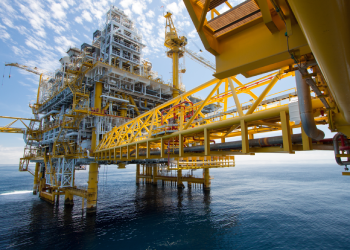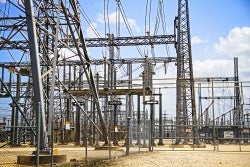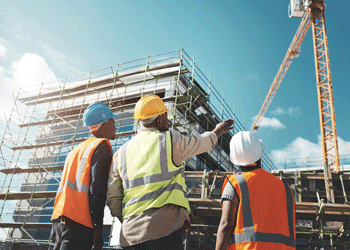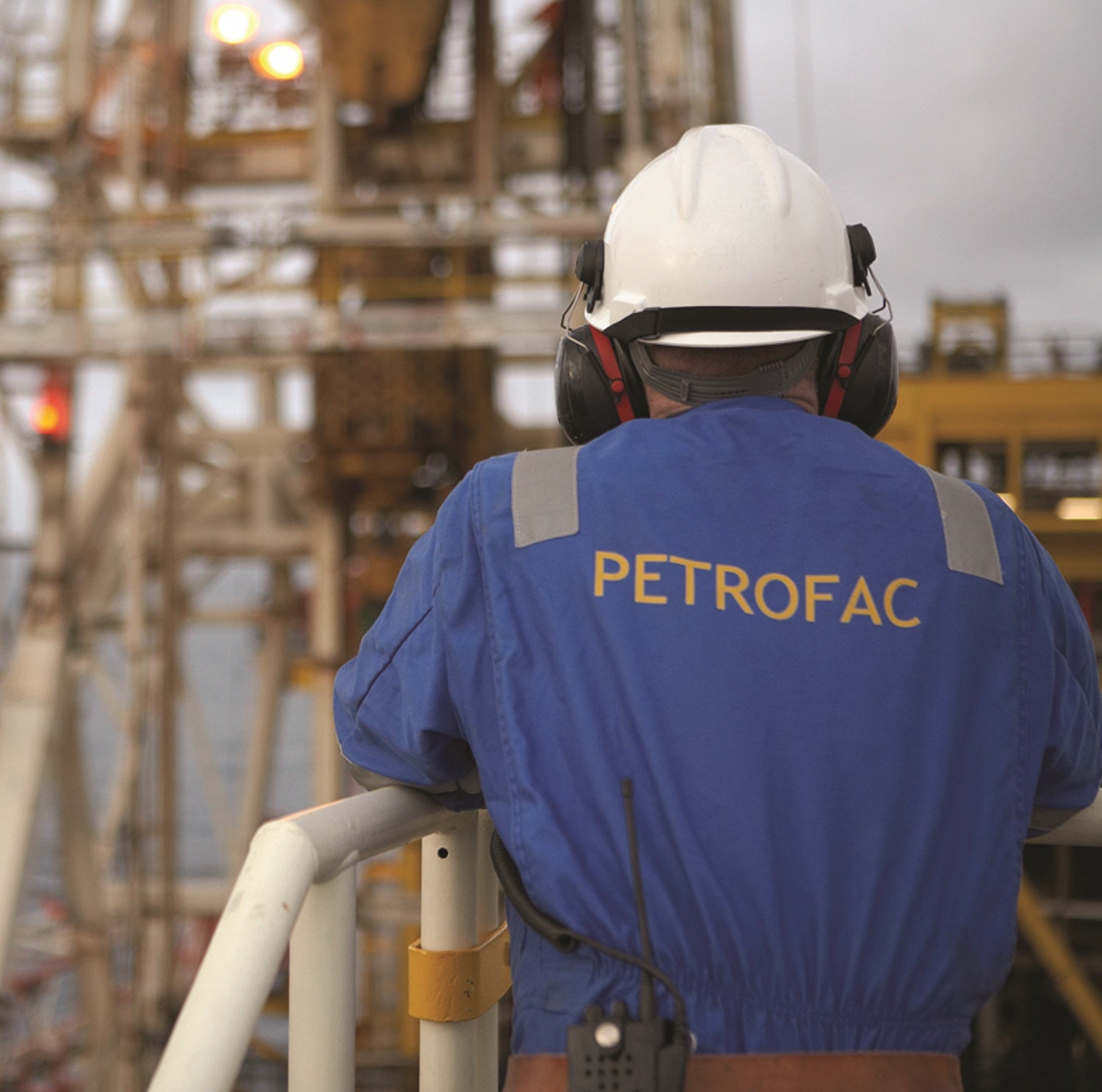Securing Bahrain’s hydrocarbons potential
3 April 2025

Bahrain, which has access to modest hydrocarbons reserves in comparison to its Gulf peers, has been in constant pursuit of additional resources to grow its oil and gas production levels.
The country took a leap towards this goal in 2018, when it announced the discovery of the Khalij Al-Bahrain offshore hydrocarbons basin, which is estimated to contain 80 billion barrels of oil and 10-20 trillion cubic feet of gas. Almost seven years on, however, Manama is not known to have made any notable progress on the commercial appraisal of that oil and gas resource base.
 State enterprise Bapco Energies has, therefore, devised a multi-pronged strategy to secure Bahrain’s energy future. The first objective is to maintain the country’s present oil and gas output levels, according to group CEO Mark Thomas.
State enterprise Bapco Energies has, therefore, devised a multi-pronged strategy to secure Bahrain’s energy future. The first objective is to maintain the country’s present oil and gas output levels, according to group CEO Mark Thomas.
“Objective number one is to stabilise oil and gas production from the existing reservoirs at the Awali field and stem the decline. These are very mature reservoirs, which, without intervention, will decline quite quickly,” Thomas tells MEED.
Bahrain’s primary oil and gas production comes from the Awali field, where the first oil in the Gulf region was discovered in 1932. Bapco Upstream, a subsidiary of Bapco Energies, is the sole operator of the onshore field. It produces an average of 42,400 barrels a day (b/d) of crude oil and 1.67 billion cubic feet a day of non-associated gas from the Awali field, which is also known as the Bahrain field.
In addition, Bapco Energies draws in about half of the 300,000 b/d production capacity of the Abu Safah offshore field, which is shared by Bahrain and Saudi Arabia.
“Objective number two is to develop new opportunities for us,” Thomas says, adding: “We’ve been looking at appraising pre-Unayzah gas from the Al-Jawf and Al-Juba reservoirs,” which Bapco Energies announced discovering in 2022.
“These are deep gas reservoirs, so we call them unconventional. They’re tight rock, need to be fracked and require the drilling of horizontal wells for production. We’ve gone through an appraisal programme on that. We’ll start a development programme in 2025 around those [discoveries].”
Exploration campaign
Bapco Energies is progressing with a “very big three-dimensional (3D) seismic programme” to hunt for offshore hydrocarbons resources, Thomas says.
“We’re running an extensive campaign covering about 4,500 square kilometres of surface area, where we will be shooting 3D seismic. That is basically around the entirety of [Bahrain]. We will carry on through 2025 and into 2026.
“We hope to be able to identify some structures and then invite companies to come, share the information with them and hopefully do some exploration drilling,” he adds.
“It’s logical that there will be [a licensing round in the future], assuming that we are successful with the 3D seismic and can identify some structures. But it needs to wait until we have some quality data.
“This has always been the hindrance for us in attracting international oil companies to come to Bahrain,” he notes.
“The quality of the data that we had for offshore was not good and, quite frankly, for a company entering a new country, the risk was too high.”
Italian energy producer Eni is the only international player that has been evaluating exploration and production opportunities in Bahrain in recent years.
“By using the latest technology with 3D seismic seabed nodes, and by shooting deeper, we will absolutely have the best data that we can. And, if there are structures offshore, we will definitely find them,” Thomas says.
By using the latest technology with 3D seismic seabed nodes … we will absolutely have the best data
Business expansion
Bapco Energies has set its sights on growing its presence in overseas markets by identifying and exploiting promising opportunities in the upstream sector, similar to the path that has been adopted by some of the other Gulf national oil companies in this decade.
“We have traditionally been a national oil and gas company, and what we’re looking at now is international expansion,” Thomas says.
“We’ve got 90 years of experience in exploring for, and developing, oil and gas fields. We want to take that capability, that experience, and apply it internationally.”
He continues: “We’ve taken that proposal through our governance structure and received approval for that.
So now, we’re looking at potential opportunities where we could invest outside of Bahrain, using our capability and experience.
“We are not necessarily [looking at] being an operator, and certainly not [aiming to be] in exploration plays, but more into already-producing fields, or fields in a late stage of development, where the risk is low. These are the types of opportunities that we’re now looking at. They are small in nature, but they’re out there and so we’re searching for them right now.”
Bapco Energies took a stride towards its goal of international expansion in July, with the launch of its venture capital arm, BeVentures.
“BeVentures is a new company for us. It’s something that a lot of the major energy companies are doing, and that is to set up a separate company to look at opportunities for investment in new services and new technologies that can both help their existing business, as well as prepare their businesses for the future, for the energy transition,” Thomas says.
“We are looking at smaller, direct investments in companies that have a commercial product. What they’re looking for is capital and [ways to] scale [up].
“We’re looking at opportunities principally within our existing businesses around oil and gas production, refining and petrochemicals. But we’re also looking at elements that will prepare us for the future, more into renewables.”
Exclusive from Meed
-
 Aramco turns attention to strategic projects
Aramco turns attention to strategic projects12 September 2025
-
 GCCIA signs $500m deal for Oman power link
GCCIA signs $500m deal for Oman power link12 September 2025
-
 Qatar’s Ashghal awards $101m construction contracts
Qatar’s Ashghal awards $101m construction contracts12 September 2025
-
 Saudi Arabia seeks consultants for Riyadh rail link
Saudi Arabia seeks consultants for Riyadh rail link12 September 2025
-
 Petrofac agrees restructuring deal with Samsung and Saipem
Petrofac agrees restructuring deal with Samsung and Saipem12 September 2025
All of this is only 1% of what MEED.com has to offer
Subscribe now and unlock all the 153,671 articles on MEED.com
- All the latest news, data, and market intelligence across MENA at your fingerprints
- First-hand updates and inside information on projects, clients and competitors that matter to you
- 20 years' archive of information, data, and news for you to access at your convenience
- Strategize to succeed and minimise risks with timely analysis of current and future market trends

Related Articles
-
 Aramco turns attention to strategic projects
Aramco turns attention to strategic projects12 September 2025

In the second quarter of 2025, Saudi Aramco’s capital expenditure (capex) stood at $12.3bn, marking a marginal year-on-year increase of 1.46%. For the first half of the year, the company recorded capex of $24.85bn, up 9.5% compared to the same period last year.
The company had earlier issued capital investment guidance of $52bn to $58bn for 2025, excluding approximately $4bn in project financing.
Concerns grew in Saudi Arabia’s offshore oil and gas projects market earlier this year as engineering, procurement, construction and installation (EPCI) contract awards stalled.
Aramco spent a record $5bn on offshore EPCI contracts in 2024 and was expected to surpass that in 2025. However, it awarded no Contract Release Purchase Orders (CRPOs) in the first half of the year, fuelling apprehension among contractors and suppliers.
In July, Aramco dispelled speculation by awarding five tenders worth over $3bn. The CRPOs are numbers 150, 157, 158, 159 and 160, and involve EPCI work and infrastructure upgrades at the Abu Safah, Berri, Manifa, Marjan and Zuluf offshore oil fields.
Aramco also awarded four additional CRPOs as part of a large-scale infrastructure expansion at the Zuluf offshore field. These are CRPOs 145, 146, 147 and 148, with a combined estimated value of nearly $6bn.
With these contract awards, Aramco has nearly doubled its offshore capex this year compared to 2024, marking another year of robust upstream investment.
Looking ahead, Aramco is evaluating bids received for seven key tenders in July and August.
These tenders include CRPOs 154, 155 and 156, representing the next phase of infrastructure expansion at the Safaniya offshore oil field; CRPO 161, which covers the EPCI of four gas jackets at the Arabiyah, Hasbah and Karan fields; and CRPOs 162, 163 and 164, relating to the EPCI of key infrastructure at the Abu Safah, Berri, Karan, Marjan and Safaniya fields.
Onshore projects advance
In parallel with the Safaniya offshore expansion, Aramco is tendering a separate project to build onshore surface and processing facilities to handle additional volumes of oil and associated gas generated by the expanded offshore infrastructure.
The scope of the Safaniya onshore facilities project has been divided into two main EPC packages: the first covering water treatment and injection units, and the second focused on produced water utilities. Contractors have been given deadlines of 24 October and 7 November to submit technical and commercial bids.
Aramco is also understood to be close to awarding the main EPC contracts for the expansion of the Haradh gas-oil separation plant 3 (Gosp 3) in Saudi Arabia. Located within the Haradh hydrocarbons development in the Eastern Province, the project will increase output of the Arab Light crude grade from 300,000 barrels a day (b/d) to 420,000 b/d. It will also raise sour gas production to 32 million cubic feet a day (cf/d).
Ramping up gas production
In line with its goal of increasing gas production, Aramco is progressing its Jafurah unconventional gas programme. Situated in Saudi Arabia’s Eastern Province, the Jafurah Basin contains the largest liquid-rich shale gas play in the Middle East, with an estimated 200 trillion cubic feet of gas in place. The shale play spans approximately 17,000 square kilometres.
The Jafurah programme is a cornerstone of Aramco’s long-term gas strategy, with total lifecycle investment expected to exceed $100bn. In February 2020, Aramco received a capex allocation of $110bn from the Saudi government to support the long-term phased development of the unconventional gas resource base.
Aramco is estimated to have spent $25bn across the first three phases of Jafurah’s development. In November 2021, the company awarded $10bn in subsurface and EPC contracts for phase one of the programme.
On 30 June 2024, Aramco awarded 16 contracts worth approximately $12.4bn for phase two. The scope includes the construction of gas compression facilities, associated pipelines and the expansion of the Jafurah gas plant – covering gas processing trains, utilities, sulphur handling and export infrastructure.
In July 2024, a consortium of Spain’s Tecnicas Reunidas and China’s Sinopec was awarded a $2.24bn EPC contract by Aramco for phase three of the expansion.
Phase four of the Jafurah expansion is estimated at $2.5bn. The scope includes EPC works for three gas compression plants, each with a capacity of 200 million cf/d. Bids were submitted in mid-January, remain valid through September, and are under evaluation, with a contract award expected in Q4 2025.
Aramco is also tendering a major project to boost gas compression capacity at the Shedgum and Uthmaniya plants in the Eastern Province.
The facilities currently receive approximately 870 million cf/d and 1.2 billion cf/d of Khuff raw gas, respectively. The project aims to increase compression and processing capacity and to construct new pipelines to enhance gas transport.
Contractors are preparing bids for several EPC packages under the Shedgum and Uthmaniya gas compression project.
MEED’s October 2025 special report on Saudi Arabia also includes:
> ECONOMY: Riyadh looks to adjust investment approach
> BANKING: New funding sources solve Saudi liquidity challenge
> GAS: Saudi Arabia and Kuwait accelerate Dorra gas field development
> POWER: Saudi Arabia accelerates power transformation
> CONSTRUCTION: Saudi construction pivots from gigaprojects to events
> TRANSPORT: Infrastructure takes centre stage in Saudi strategyhttps://image.digitalinsightresearch.in/uploads/NewsArticle/14656451/main.png -
 GCCIA signs $500m deal for Oman power link
GCCIA signs $500m deal for Oman power link12 September 2025
The GCC Interconnection Authority (GCCIA) has signed a $500m interim financing agreement with Sohar International Bank to support the planned direct electricity interconnection between Oman and the GCC grid.
The project will involve building a 400-kilovolt double-circuit transmission line linking the Al-Sila station in the UAE with a new Ibri station in Oman. The line will span 530km.
The Al-Sila station, located in Abu Dhabi near the border with Saudi Arabia, is owned and operated by GCCIA. It is a key node in the existing Gulf power grid, enabling the transfer of electricity between the UAE, Saudi Arabia and other GCC states.
The Ibri station will be newly developed by GCCIA as part of the interconnection project. Situated in Oman’s Al-Dhahirah governorate, the facility will act as the entry point for linking Oman’s national grid to the wider GCC network. Oman is currently connected via the UAE grid.
The link will provide a transmission capacity of 1,700MW and a net transfer capacity of 1,200MW.
In February, MEED reported that the interconnection project would require around $700m of investment.
It had previously been estimated that the project could cost around $1bn.
The Qatar Fund for Development (QFFD) signed an agreement with the GCCIA in the same month to finance part of the electricity transmission network that will form Oman’s second link with the GCCIA network.
Local media reports suggested that QFFD would provide around $100m for the project.
Although a contract has yet to be awarded, it is understood that Bahwan Engineering Company is among the firms that have submitted bids for the project.
In June, Abu Dhabi Fund for Development (ADFD) signed a financing agreement with the GCCIA to support a $205m project linking the Al-Sila substation to Saudi Arabia’s Salwa substation.
This involves the construction of a 400kV double-circuit overhead transmission line extending 96km and includes the expansion of three key substations in Gonan, Al-Sila and Salwa.
Oman’s first link with the GCCIA became operational in November 2011.
It comprises a 200kV line connecting the Mahadha grid station in Al-Wasit, Oman, to the Al-Oha grid station in Al-Ain, UAE.
Projects are also under way for interconnection with Kuwait, as well as with Iraq, as part of a major investment.
https://image.digitalinsightresearch.in/uploads/NewsArticle/14656220/main.jpg -
 Qatar’s Ashghal awards $101m construction contracts
Qatar’s Ashghal awards $101m construction contracts12 September 2025
Qatar’s Public Works Authority (Ashghal) has awarded two contracts worth over QR368m ($101m) for the construction of projects across various locations in the country.
The first contract, worth QR228m ($62m), was awarded to the local firm Bo Jamhoor Trading & Contracting Company. The scope of the contract encompasses the construction of three new schools at different sites in Qatar.
The other QR140m ($38m) contract was awarded for the repair and renovation works at the Al-Zubara horse breeding farm, located about 60 kilometres (km) from Doha.
The contract was awarded to the local firm Generic Engineering Technologies & Contracting.
The latest award follows Ashghal’s issuance of a tender inviting firms to bid for the construction of roads and infrastructure in Wadi Al-Banat North, Zone 70.
The tender was floated on 3 September, with a bid submission date of 30 September.
The contract duration is three years from the start of construction.
Market overview
After 2019, there was a consistent year-on-year decline in contract awards in Qatar’s construction and transport sectors. The total value of awards in that year was $13.5bn, but by 2023 it had fallen to just over $1.2bn.
In 2024, the value of project contract awards increased to $1.7bn, bucking the downward trend in the market in the preceding four years.
Of last year’s figure, the construction sector accounted for contract awards of over $1.2bn, while transport contract awards were about $200m.
There are strategic projects worth more than $5bn in the bidding phase, and these are expected to provide renewed impetus to the construction and transportation market, presenting opportunities for contractors in the near term.
https://image.digitalinsightresearch.in/uploads/NewsArticle/14656436/main.gif -
 Saudi Arabia seeks consultants for Riyadh rail link
Saudi Arabia seeks consultants for Riyadh rail link12 September 2025

Register for MEED’s 14-day trial access
Saudi Arabia Railways (SAR) has floated a tender notice inviting consultants to bid by 28 September for a contract covering the design review and construction supervision for the Riyadh rail link project.
The 35-kilometre-long double-track rail line will run from the north of Riyadh to the south, connecting SAR's North-South railway network with the Eastern Railway network.
Last week, MEED exclusively reported that SAR had asked contractors to prequalify for a contract covering the construction of the Riyadh rail link.
The contract also includes the procurement, construction and installation of associated infrastructure, including viaduct construction, civil works, utility installations, signalling systems and other associated works.
The project is expected to become a key component of the Saudi Landbridge railway.
The Saudi Landbridge is an estimated $7bn project comprising more than 1,500km of new track. Its core component is a 900km new railway between Riyadh and Jeddah, which will provide direct freight access to the capital from King Abdullah Port on the Red Sea.
Other key sections include upgrades to the existing Riyadh-Dammam line and a link between King Abdullah Port and Yanbu.
The start of the tendering activity for the Riyadh rail link project makes the construction of the Saudi Landbridge project even more likely.
The project is one of the kingdom’s most anticipated infrastructure programmes. Plans to develop it were first announced in 2004, but the project was put on hold in 2010 before being revived a year later.
Key stumbling blocks were rights-of-way issues, route alignment and its high cost.
In December 2023, MEED reported that a team of US-based Hill International, Italy’s Italferr and Spain’s Sener had been awarded the contract to provide project management services for the programme.
If it proceeds, the Landbridge will be one of the largest railway projects ever undertaken in the Middle East – and among the biggest globally.
https://image.digitalinsightresearch.in/uploads/NewsArticle/14655581/main.jpg -
 Petrofac agrees restructuring deal with Samsung and Saipem
Petrofac agrees restructuring deal with Samsung and Saipem12 September 2025
The UK-based engineering company Petrofac has announced that it has reached an agreement in principle with South Korea’s Samsung E&A and Italy’s Saipem that will allow the company to restructure.
The announcement comes more than two months after an appeals court in the UK ruled against Petrofac’s restructuring plans and in favour of Samsung E&A and Saipem.
The dispute between the three firms, which all have a significant presence in Middle East oil and gas projects, is centred on Petrofac’s participation in the $4bn Thai Oil clean fuels project.
Petrofac said that the commercial terms of the new agreement between the three companies have been supported by an “Ad Hoc Group” of bondholders.
This refers to a group of senior secured creditors that backstopped the original restructuring plan earlier this year.
Petrofac has said that it will now “work to conclude discussions with key stakeholders on next steps towards implementation of the restructuring”.
It added that, “subject to receipt of all requisite approvals and satisfaction of conditions”, it expects its restructuring to be completed by the end of November 2025.
Petrofac did not give any details about what commercial terms had been agreed with Samsung E&A and Saipem.
https://image.digitalinsightresearch.in/uploads/NewsArticle/14655445/main.jpg



